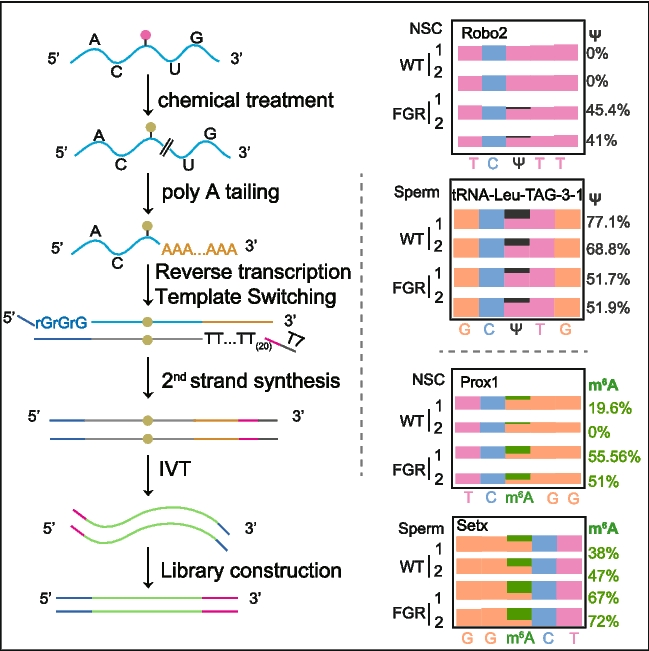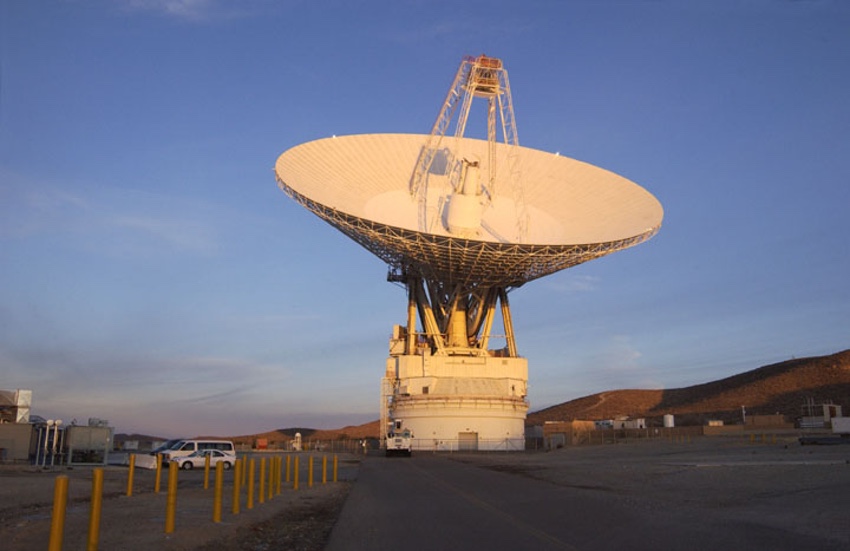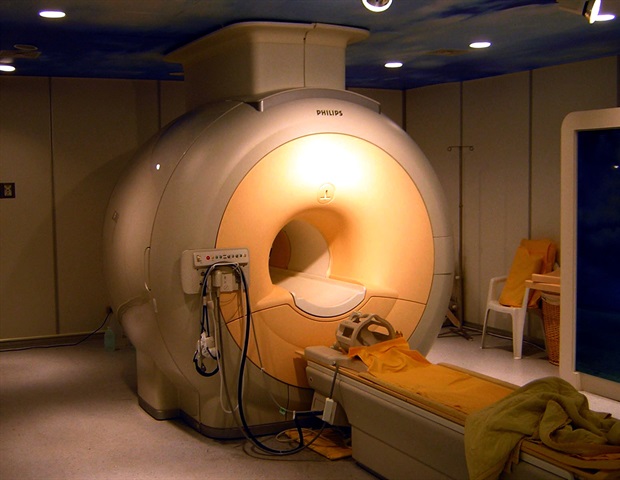Jonny HumphriesNorth West
 Peter Macdiarmid/Getty Images
Peter Macdiarmid/Getty ImagesA Hillsborough disaster survivor has reacted with fury to the BBC’s decision to…

Jonny HumphriesNorth West
 Peter Macdiarmid/Getty Images
Peter Macdiarmid/Getty ImagesA Hillsborough disaster survivor has reacted with fury to the BBC’s decision to…

McCown PJ, Ruszkowska A, Kunkler CN, Breger K, Hulewicz JP, Wang MC, et al. Naturally occurring modified ribonucleosides. WIREs RNA. 2020;11:e1595.
Google Scholar
Liu N, Dai Q, Zheng G, He C, Parisien M, Pan T. N(6)-methyladenosine-dependent RNA structural switches regulate RNA-protein interactions. Nature. 2015;518:560–4.
Google Scholar
He PC, Wei J, Dou X, Harada BT, Zhang Z, Ge R, et al. Exon architecture controls mRNA m(6)A suppression and gene expression. Science. 2023;379:677–82.
Google Scholar
Liu J, Dou X, Chen C, Chen C, Liu C, Xu MM, et al. N (6)-methyladenosine of chromosome-associated regulatory RNA regulates chromatin state and transcription. Science. 2020;367:580–6.
Google Scholar
Xu W, Li J, He C, Wen J, Ma H, Rong B, et al. METTL3 regulates heterochromatin in mouse embryonic stem cells. Nature. 2021;591:317–21.
Google Scholar
Wei J, Yu X, Yang L, Liu X, Gao B, Huang B, et al. FTO mediates LINE1 m(6)a demethylation and chromatin regulation in mESCs and mouse development. Science. 2022;376(6596):968–73.
Google Scholar
Frye M, Harada BT, Behm M, He C. RNA modifications modulate gene expression during development. Science. 2018;361:1346–9.
Google Scholar
Roundtree IA, Luo GZ, Zhang Z, Wang X, Zhou T, Cui Y, et al. YTHDC1 mediates nuclear export of N(6)-methyladenosine methylated mRNAs. Elife. 2017. https://doi.org/10.7554/eLife.31311.
Google Scholar
Liu C, Dou X, Zhao Y, Zhang L, Zhang L, Dai Q, et al. IGF2BP3 promotes mRNA degradation through internal m(7)g modification. Nat Commun. 2024;15:7421.
Google Scholar
Wang X, Lu Z, Gomez A, Hon GC, Yue Y, Han D, et al. N6-methyladenosine-dependent regulation of messenger RNA stability. Nature. 2014;505:117–20.
Google Scholar
Dominissini D, Nachtergaele S, Moshitch-Moshkovitz S, Peer E, Kol N, Ben-Haim MS, et al. The dynamic N(1)-methyladenosine methylome in eukaryotic messenger RNA. Nature. 2016;530:441–6.
Google Scholar
Wang X, Zhao BS, Roundtree IA, Lu Z, Han D, Ma H, et al. N(6)-methyladenosine modulates messenger RNA translation efficiency. Cell. 2015;161:1388–99.
Google Scholar
Dominissini D, Moshitch-Moshkovitz S, Schwartz S, Salmon-Divon M, Ungar L, Osenberg S, et al. Topology of the human and mouse m6A RNA methylomes revealed by m6A-seq. Nature. 2012;485:201–6.
Google Scholar
Meyer KD, Saletore Y, Zumbo P, Elemento O, Mason CE, Jaffrey SR. Comprehensive analysis of mRNA methylation reveals enrichment in 3’ UTRs and near stop codons. Cell. 2012;149:1635–46.
Google Scholar
Li Y, Wang Y, Vera-Rodriguez M, Lindeman LC, Skuggen LE, Rasmussen EMK, et al. Single-cell m(6)A mapping in vivo using picoMeRIP-seq. Nat Biotechnol. 2024;42:591–6.
Google Scholar
Yao H, Gao CC, Zhang D, Xu J, Song G, Fan X, et al. Scm(6)A-seq reveals single-cell landscapes of the dynamic m(6)A during oocyte maturation and early embryonic development. Nat Commun. 2023;14:315.
Google Scholar
Hamashima K, Wong KW, Sam TW, Teo JHJ, Taneja R, Le MTN, et al. Single-nucleus multiomic mapping of m(6)A methylomes and transcriptomes in native populations of cells with sn-m6A-CT. Mol Cell. 2023. https://doi.org/10.1016/j.molcel.2023.08.010.
Google Scholar
McIntyre ABR, Gokhale NS, Cerchietti L, Jaffrey SR, Horner SM, Mason CE. Limits in the detection of m6A changes using MeRIP/m6A-seq. Sci Rep. 2020;10:6590.
Google Scholar
Hu L, Liu S, Peng Y, Ge R, Su R, Senevirathne C, et al. M(6)a RNA modifications are measured at single-base resolution across the mammalian transcriptome. Nat Biotechnol. 2022;40:1210–9.
Google Scholar
Liu C, Sun H, Yi Y, Shen W, Li K, Xiao Y, et al. Absolute quantification of single-base m(6)A methylation in the mammalian transcriptome using GLORI. Nat Biotechnol. 2023;41:355–66.
Google Scholar
Shen W, Sun H, Liu C, Yi Y, Hou Y, Xiao Y, et al. Glori for absolute quantification of transcriptome-wide m(6)a at single-base resolution. Nat Protoc. 2024;19:1252–87.
Google Scholar
Li X, Xiong X, Zhang M, Wang K, Chen Y, Zhou J, et al. Base-Resolution Mapping Reveals Distinct m(1)A Methylome in Nuclear- and Mitochondrial-Encoded Transcripts. Mol Cell. 2017;68(993–1005):e1009.
Zhou H, Rauch S, Dai Q, Cui X, Zhang Z, Nachtergaele S, et al. Evolution of a reverse transcriptase to map N(1)-methyladenosine in human messenger RNA. Nat Methods. 2019;16:1281–8.
Google Scholar
Pajdzik K, Lyu R, Dou X, Ye C, Zhang LS, Dai Q, et al. Chemical manipulation of m(1)A mediates its detection in human tRNA. RNA. 2024;30:548–59.
Google Scholar
Ge R, Ye C, Peng Y, Dai Q, Zhao Y, Liu S, et al. M(6)A-SAC-seq for quantitative whole transcriptome m(6)a profiling. Nat Protoc. 2023;18:626–57.
Google Scholar
Xu H, Kong L, Cheng J, Al Moussawi K, Chen X, Iqbal A, et al. Absolute quantitative and base-resolution sequencing reveals comprehensive landscape of pseudouridine across the human transcriptome. Nat Methods. 2024. https://doi.org/10.1038/s41592-024-02439-8.
Google Scholar
Zhang M, Jiang Z, Ma Y, Liu W, Zhuang Y, Lu B, et al. Quantitative profiling of pseudouridylation landscape in the human transcriptome. Nat Chem Biol. 2023;19:1185–95.
Google Scholar
Dai Q, Ye C, Irkliyenko I, Wang Y, Sun HL, Gao Y, et al. Ultrafast bisulfite sequencing detection of 5-methylcytosine in DNA and RNA. Nat Biotechnol. 2024. https://doi.org/10.1038/s41587-023-02034-w.
Google Scholar
Lu L, Zhang X, Zhou Y, Shi Z, Xie X, Zhang X, et al. Base-resolution m(5)C profiling across the mammalian transcriptome by bisulfite-free enzyme-assisted chemical labeling approach. Mol Cell. 2024;84(2984–3000):e2988.
Marchand V, Ayadi L, Ernst FGM, Hertler J, Bourguignon-Igel V, Galvanin A, et al. Alkaniline-seq: profiling of m(7) G and m(3) C RNA modifications at single nucleotide resolution. Angew Chem Int Ed Engl. 2018;57:16785–90.
Google Scholar
Zhang LS, Liu C, Ma H, Dai Q, Sun HL, Luo G, et al. Transcriptome-wide Mapping of Internal N(7)-Methylguanosine Methylome in Mammalian mRNA. Mol Cell. 2019;74(1304–1316):e1308.
Sas-Chen A, Thomas JM, Matzov D, Taoka M, Nance KD, Nir R, et al. Dynamic RNA acetylation revealed by quantitative cross-evolutionary mapping. Nature. 2020;583:638–43.
Google Scholar
Beiki H, Sturgill D, Arango D, Relier S, Schiffers S, Oberdoerffer S. Detection of ac4C in human mRNA is preserved upon data reassessment. Mol Cell. 2024;84(1611–1625):e1613.
Zhang LS, Ju CW, Jiang B, He C. Base-resolution quantitative DAMM-seq for mapping RNA methylations in tRNA and mitochondrial polycistronic RNA. Methods Enzymol. 2023;692:39–54.
Google Scholar
Gynecologists ACO: ACOG Practice Bulletin No. 227: Fetal Growth Restriction. Obstetrics Gynecol. 2021;137:754.
Gilchrist C, Cumberland A, Walker D, Tolcos M. Intrauterine growth restriction and development of the hippocampus: implications for learning and memory in children and adolescents. Lancet Child Adolesc Health. 2018;2:755–64.
Google Scholar
Hoek HW, Susser E, Buck KA, Lumey LH, Lin SP, Gorman JM. Schizoid personality disorder after prenatal exposure to famine. Am J Psychiatry. 1996;153:1637–9.
Google Scholar
Chen YY, Zhou LA. The long-term health and economic consequences of the 1959–1961 famine in China. J Health Econ. 2007;26:659–81.
Google Scholar
Tsikouras P, Antsaklis P, Nikolettos K, Kotanidou S, Kritsotaki N, Bothou A, et al. Diagnosis, prevention, and management of fetal growth restriction (FGR). J Pers Med. 2024. https://doi.org/10.3390/jpm14070698.
Google Scholar
Chen W, Liu N, Shen S, Zhu W, Qiao J, Chang S, et al. Fetal growth restriction impairs hippocampal neurogenesis and cognition via Tet1 in offspring. Cell Rep. 2021;37:109912.
Google Scholar
Veenendaal MVE, Painter RC, de Rooij SR, Bossuyt PMM, van der Post JAM, Gluckman PD, et al. Transgenerational effects of prenatal exposure to the 1944–45 Dutch famine. BJOG. 2013;120:548–54.
Google Scholar
Yao WY, Yu YF, Li LH, Xu WH. Exposure to Chinese famine in early life and height across 2 generations: a longitudinal study based on the China Health and Nutrition Survey. Am J Clin Nutr. 2024;119:433–43.
Google Scholar
Radford EJ, Ito M, Shi H, Corish JA, Yamazawa K, Isganaitis E, Seisenberger S, Hore TA, Reik W, Erkek S, et al: In utero undernourishment perturbs the adult sperm methylome and intergenerational metabolism. Science. 2014;345:785.
Zhang ZM, Luo XF, Lv Y, Yan LL, Xu SS, Wang Y, et al. Intrauterine growth restriction programs intergenerational transmission of pulmonary arterial hypertension and endothelial dysfunction via sperm epigenetic modifications. Hypertension. 2019;74:1160–71.
Google Scholar
Borchardt EK, Martinez NM, Gilbert WV. Regulation and function of RNA pseudouridylation in human cells. Annu Rev Genet. 2020;54:309–36.
Google Scholar
Zhang LS, Ye C, Ju CW, Gao B, Feng X, Sun HL, et al. BID-seq for transcriptome-wide quantitative sequencing of mRNA pseudouridine at base resolution. Nat Protoc. 2024;19:517–38.
Google Scholar
Santiago J, Silva JV, Howl J, Santos MAS, Fardilha M. All you need to know about sperm RNAs. Hum Reprod Update. 2021;28:67–91.
Google Scholar
Chen Q, Yan W, Duan E. Epigenetic inheritance of acquired traits through sperm RNAs and sperm RNA modifications. Nat Rev Genet. 2016;17:733–43.
Google Scholar
Herridge RP, Dolata J, Migliori V, Alves CD, Borges F, Schorn AJ, van Ex F, Lin A, Bajczyk M, Parent JS, et al. Pseudouridine guides germline small RNA transport and epigenetic inheritance. Nat Struct Mol Biol. 2025 Feb;32(2):277-86.
Suzuki T. The expanding world of tRNA modifications and their disease relevance. Nat Rev Mol Cell Biol. 2021;22:375–92.
Google Scholar
Wang C, Lu CF, Peng J, Hu CD, Wang Y. Roles of neural stem cells in the repair of peripheral nerve injury. Neural Regen Res. 2017;12:2106–12.
Google Scholar
Wen C, Cao L, Wang S, Xu W, Yu Y, Zhao S, et al. MCM8 interacts with DDX5 to promote R-loop resolution. EMBO J. 2024;43:3044–71.
Google Scholar
Zhai Y, Cheng E, Wu H, Li N, Yung PY, Gao N, et al. Open-ringed structure of the Cdt1-Mcm2-7 complex as a precursor of the MCM double hexamer. Nat Struct Mol Biol. 2017;24:300–8.
Google Scholar
Wang P, Ye C, Zhao M, Jiang B, He C. Small-molecule-catalysed deamination enables transcriptome-wide profiling of N(6)-methyladenosine in RNA. Nat Chem. 2025. https://doi.org/10.1038/s41557-025-01801-3.
Google Scholar
Sun H, Lu B, Zhang Z, Xiao Y, Zhou Z, Xi L, et al. Mild and ultrafast GLORI enables absolute quantification of m(6)A methylome from low-input samples. Nat Methods. 2025. https://doi.org/10.1038/s41592-025-02680-9.
Google Scholar
Li Y, Xue J, Ma Y, Ye K, Zhao X, Ge F, et al. The complex roles of m 6 A modifications in neural stem cell proliferation, differentiation, and self-renewal and implications for memory and neurodegenerative diseases. Neural Regen Res. 2025;20:1582–98.
Google Scholar
Lv J, Xing L, Zhong X, Li K, Liu M, Du K. Role of N6-methyladenosine modification in central nervous system diseases and related therapeutic agents. Biomed Pharmacother. 2023;162:114583.
Google Scholar
Wan X, Ge Y, Xu S, Feng Y, Zhu Y, Yin L, et al. M(6)a modification and its role in neural development and neurological diseases. Epigenomics. 2023;15:819–33.
Google Scholar
Gui Y, Yuan S. Epigenetic regulations in mammalian spermatogenesis: RNA-m(6)a modification and beyond. Cell Mol Life Sci. 2021;78:4893–905.
Google Scholar
Lin Z, Hsu PJ, Xing X, Fang J, Lu Z, Zou Q, et al. Mettl3-/Mettl14-mediated mRNA N(6)-methyladenosine modulates murine spermatogenesis. Cell Res. 2017;27:1216–30.
Google Scholar
Huang T, Liu ZD, Zheng Y, Feng TY, Gao Q, Zeng WX. YTHDF2 promotes spermagonial adhesion through modulating MMPs decay via m6A/mRNA pathway. Cell Death Dis. 2020. https://doi.org/10.1038/s41419-020-2235-4.
Google Scholar
Wu YF, Li JC, Li CMJ, Lu S, Wei XY, Li Y, et al. Fat mass and obesity-associated factor (FTO)-mediated N6-methyladenosine regulates spermatogenesis in an age-dependent manner. J Biol Chem. 2023. https://doi.org/10.1016/j.jbc.2023.104783.
Google Scholar
Myers BL, Brayer KJ, Paez-Beltran LE, Villicana E, Keith MS, Suzuki H, et al. Transcription factors ASCL1 and OLIG2 drive glioblastoma initiation and co-regulate tumor cell types and migration. Nat Commun. 2024;15:10363.
Google Scholar
Hoeck JD, Jandke A, Blake SM, Nye E, Spencer-Dene B, Brandner S, et al. Fbw7 controls neural stem cell differentiation and progenitor apoptosis via Notch and c-Jun. Nat Neurosci. 2010;13:1365–72.
Google Scholar
Torii MA, Matsuzaki F, Osumi N, Kaibuchi K, Nakamura S, Casarosa S, et al. Transcription factors Mash-1 and Prox-1 delineate early steps in differentiation of neural stem cells in the developing central nervous system. Development. 1999;126:443–56.
Google Scholar
Karalay Ö, Doberauer K, Vadodaria KC, Knobloch M, Berti L, Miquelajauregui A, et al. Prospero-related homeobox 1 gene (Prox1) is regulated by canonical Wnt signaling and has a stage-specific role in adult hippocampal neurogenesis. Proc Natl Acad Sci U S A. 2011;108:5807–12.
Google Scholar
Salmen F, De Jonghe J, Kaminski TS, Alemany A, Parada GE, Verity-Legg J, et al. High-throughput total RNA sequencing in single cells using VASA-seq. Nat Biotechnol. 2022;40:1780–93.
Google Scholar
Turchinovich A, Surowy H, Serva A, Zapatka M, Lichter P, Burwinkel B. Capture and amplification by tailing and switching (CATS). An ultrasensitive ligation-independent method for generation of DNA libraries for deep sequencing from picogram amounts of DNA and RNA. RNA Biol. 2014;11:817–28.
Google Scholar
Chen C, Xing D, Tan L, Li H, Zhou G, Huang L, et al. Single-cell whole-genome analyses by linear amplification via transposon insertion (LIANTI). Science. 2017;356:189–94.
Google Scholar
Cui XL, Nie J, Zhu H, Kowitwanich K, Beadell AV, West-Szymanski DC, et al. LABS: linear amplification-based bisulfite sequencing for ultrasensitive cancer detection from cell-free DNA. Genome Biol. 2024;25:157.
Google Scholar
Xie R, Yang X, He W, Luo Z, Li W, Xu C, et al. LAMP-MS for locus-specific visual quantification of DNA 5 mC and RNA m(6)A using ultra-low input. Angew Chem Int Ed Engl. 2025;64:e202413872.
Google Scholar
Lyu J, Chen C. LAST-seq: single-cell RNA sequencing by direct amplification of single-stranded RNA without prior reverse transcription and second-strand synthesis. Genome Biol. 2023;24:184.
Google Scholar
Verboom K, Everaert C, Bolduc N, Livak KJ, Yigit N, Rombaut D, et al. SMARTer single cell total RNA sequencing. Nucleic Acids Res. 2019;47:e93.
Google Scholar
Eyler DE, Franco MK, Batool Z, Wu MZ, Dubuke ML, Dobosz-Bartoszek M, et al. Pseudouridinylation of mRNA coding sequences alters translation. Proc Natl Acad Sci U S A. 2019;116:23068–74.
Google Scholar
Deogharia M, Mukhopadhyay S, Joardar A, Gupta R. The human ortholog of archaeal Pus10 produces pseudouridine 54 in select tRNAs where its recognition sequence contains a modified residue. RNA. 2019;25:336–51.
Google Scholar
Song J, Zhuang Y, Zhu C, Meng H, Lu B, Xie B, et al. Differential roles of human PUS10 in miRNA processing and tRNA pseudouridylation. Nat Chem Biol. 2020;16:160–9.
Google Scholar
Mukhopadhyay S, Deogharia M, Gupta R. Mammalian nuclear TRUB1, mitochondrial TRUB2, and cytoplasmic PUS10 produce conserved pseudouridine 55 in different sets of tRNA. RNA. 2021;27:66–79.
Google Scholar
Behm-Ansmant I, Massenet S, Immel F, Patton JR, Motorin Y, Branlant C. A previously unidentified activity of yeast and mouse RNA:pseudouridine synthases 1 (Pus1p) on tRNAs. RNA. 2006;12:1583–93.
Google Scholar
Feinberg JS, Joseph S. Identification of molecular interactions between P-site tRNA and the ribosome essential for translocation. Proc Natl Acad Sci U S A. 2001;98:11120–5.
Google Scholar
Helm M, Brule H, Degoul F, Cepanec C, Leroux JP, Giege R, et al. The presence of modified nucleotides is required for cloverleaf folding of a human mitochondrial tRNA. Nucleic Acids Res. 1998;26:1636–43.
Google Scholar
Zhang J, Xiong YW, Tan LL, Zheng XM, Zhang YF, Ling Q, et al. Sperm Rhoa m6A modification mediates intergenerational transmission of paternally acquired hippocampal neuronal senescence and cognitive deficits after combined exposure to environmental cadmium and high-fat diet in mice. J Hazard Mater. 2023;458:131891.
Google Scholar
Zhou Y, Lian C, Lu Y, Wang T, Zhao C, Zhang C, Gong M, Chen J, Ju R: Maternal androgen exposure induces intergenerational effects via paternal inheritance. J Endocrinol. 2024;262(2):e230368.
Mao Y, Meng Y, Zou K, Qin N, Wang Y, Yan J, et al. Advanced paternal age exacerbates neuroinflammation in offspring via m6A modification-mediated intergenerational inheritance. J Neuroinflammation. 2024;21:249.
Google Scholar
He W, Yin X, Xu C, Liu X, Huang Y, Yang C, et al. Ascorbic acid reprograms epigenome and epitranscriptome by reducing Fe(III) in the catalytic cycle of dioxygenases. ACS Chem Biol. 2024;19:129–40.
Google Scholar
Hu L, Xu C, He W. Uli-Epic: A cutting-edge library construction strategy for profiling ultra-limited RNA modifications [Uli-Epic BID-seq] Gene Expression Omnibus. 2024. https://www.ncbi.nlm.nih.gov/geo/query/acc.cgi?&acc=GSE277358.
Uli-Epic: A cutting-edge library construction strategy for profiling ultra-limited RNA modifications [Uli-Epic GLORI] Gene Expression Omnibus. 2024. https://www.ncbi.nlm.nih.gov/geo/query/acc.cgi?acc=GSE277359.
Hu L, Xu C, He W. Ascorbic acid reprogrames epigenome and epitranscriptome by recycling Fe (III) into Fe (II) in the catalytic cycle of dioxygenases. Gene Expression Omnibus. 2024. https://www.ncbi.nlm.nih.gov/geo/query/acc.cgi?acc=GSE242760.

ADI IGNATIUS: I am Adi Ignatius.
ALISON BEARD: I’m Alison Beard, and this is the HBR IdeaCast.
ADI IGNATIUS So today’s guest is the renowned researcher and author, Brené Brown. It’s probably best known for her work on…


GNU Coreutils is the backbone of many enterprise Linux environments. It provides the basic file, shell, and text utilities that every GNU-based system depends on. The latest release, version 9.9, refines these tools with fixes and…

The therapeutic landscape of relapsed or refractory multiple myeloma has evolved rapidly with the advent of BCMA-directed cellular therapies, offering the possibility of deep and durable responses in a setting historically characterized by diminishing treatment returns with each subsequent line of therapy. However, questions have remained regarding long-term durability, late relapse, and safety with extended follow-up. Updated 3-year results from the phase 1b/2 FUMANBA-1 trial (NCT05066646; CTR20192510) presented by investigators from the China Academy of Chinese Medical Sciences at the
In the study, equecabtagene autoleucel (eque-cel; Fucaso), a fully human anti-BCMA CAR T-cell therapy, continued to demonstrate sustained clinical activity at a median follow-up of 36 months. Among 107 efficacy-evaluable patients, the objective response rate (ORR) reached 96.3%, including an 83.2% complete response (CR) or better rate. In CAR T-cell therapy–naive patients (n = 95), outcomes were even more pronounced, with ORR and CR rates of 98.9% and 88.4%, respectively. The median progression-free survival (PFS) was 30.46 months (95% CI, 24.11-42.15) in the overall population, extending to 39.82 months (95% CI, 30.26-not reached) among patients achieving at least a CR and 35.91 months (95% CI, 25.95-47.67) among those without prior CAR T-cell therapy. The median overall survival (OS) had not yet been reached, with 66.3% of patients alive at 3 years.
“Eque-cel is an excellent product, and I hope it [will] benefit patients around the world,” lead study author Lugui Qiu, MD, shared in an interview with OncLive®, where he expanded on the clinical significance of these results, the durability of responses observed with eque-cel, and how these data inform the positioning of BCMA-directed CAR T-cell therapy in contemporary myeloma treatment sequencing.
Qiu is part of the National Clinical Research Center for Blood Diseases, the State Key Laboratory of Experimental Hematology, and the Blood Diseases Hospital & Institute of Hematology at the Chinese Academy of Medical Sciences & Peking Union Medical College.
Qiu: The study was designed as a registrational trial that evaluated eque-cel, a fully human anti-BCMA CAR-T cell therapy originally from a biotech [company] in China. This study started in 2019, and the enrollment finished in 1 year, so it went well.
On June 30, 2023, eque-cel was
There were a total of 109 patients enrolled in this clinical trial, and 107 patients were efficacy evaluable. The total response rate was [96.3]%, and the CR [or better] rate was [83.2]%. We enrolled 12 patients who had received prior BCMA-directed CAR-T therapy. For those patients, the total response rate was 75%, with a median PFS of [approximately] 1 year. For patients without prior BCMA-directed CAR T-cell therapy, the total response was [98.9]%, and the CR rate was [88.4]%.
After a median follow-up of 3 years, in the whole group, the median PFS was [30.46] months. For the 95 patients without prior CAR-T therapy, the median PFS was [35.91] months, and the median OS was not yet reached. [In total], 66.3% of patients were still alive at the 3-year follow-up.
The safety profile is [good]. During the trial, [93.6]% of patients [experienced CRS], but mostly grade 1 or grade 2. Only 1 patient experienced grade 3 CRS, and there were only 2 patients who [developed] ICANS. There were no toxicity-related deaths in this trial.
Several commercial BCMA-directed CAR-T therapies are [available globally]. In my impression, eque-cel has efficacy comparable with ciltacabtagene ciloleucel, and the safety profile is better than idecabtagene vicleucel. Eque-cel is a good product balancing [both] the efficacy and safety profiles.
We have also launched a real-world study of eque-cel in relapsed and refractory multiple myeloma following market approval. [At IMS, we had] a poster reporting 150 cases from this real-world study. The results show that the efficacy and safety profile in the real-world setting were similar to [those in] our clinical trial.
This product has benefited many heavily pretreated patients, including those previously treated with proteasome inhibitors, IMiDs, anti-CD38 antibodies, and even some patients who had prior BCMA-directed CAR T-cell therapy. [These patients] can still benefit from eque-cel.

ISLAMABAD (AP) — A suicide bomber struck outside the gates of a district court in Islamabad on Tuesday, detonating his explosives next to a police car and killing 12 people, Pakistan’s interior…

WASHINGTON — One of the largest antennas in NASA’s Deep Space Network was damaged in September and may be out of service for an extended period, further straining the system.
NASA’s Jet Propulsion Laboratory confirmed Nov. 10…

A simple blood test for platelet activity at middle age could one day help identify people at risk for Alzheimer’s disease decades ahead of time, allowing for possible preventive therapy.
The blood-clotting process in vascular…